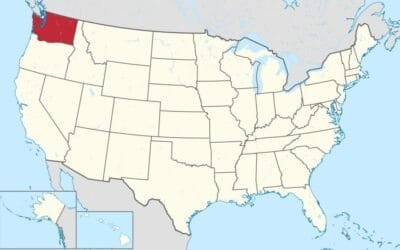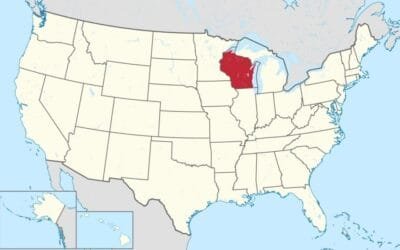Maine Incarceration: Key Facts
Maine’s prison system faces a growing crisis. The state has an incarceration rate of 272 per 100,000 people. This is higher than most democratic countries. With 3,500 individuals in prison, and 5,215 on probation or parole, the numbers are climbing. This growing crisis raises eyebrows and questions. Why so many? The racial disparities are troubling too. Black people in Maine are imprisoned at 9.2 times the rate of white people. The Maine Judicial Branch and other policies play a part here. Notably, 63% of people in jail haven’t been convicted yet. The Prison Policy Initiative highlights these issues. But, what about Maine State Prison? It’s one piece of a larger puzzle.

Current Trends in Maine’s Prison Population
Maine’s prison numbers paint a complex picture. With incarceration rates higher than many democratic nations, the state grapples with significant challenges. Over 3,500 are behind bars, and 14,000 cycle through local jails annually. The racial disparities are evident, with Black individuals facing incarceration rates 9.2 times higher than white counterparts. This glaring difference is a product of systemic biases deeply rooted in historical and present-day policies.
The Maine Judicial Branch plays a pivotal role here. Notably, a staggering 63% in jails are awaiting trial, highlighting issues within the criminal cases process. The Prison Policy Initiative often critiques these practices, advocating for reforms.
However, the path to reform isn’t straightforward. Addressing these issues requires a multi-faceted approach. Reducing pretrial detention and exploring community-based alternatives could ease the strain on Maine prisons.
Racial Disparities Among Incarcerated Populations
Highlighting the profound racial disparities seen among those behind bars, Maine presents a stark contrast. Black people face incarceration rates 9.2 times higher than white people. This imbalance suggests deep-seated biases rooted in past and current policies. The Maine Judicial Branch often finds itself at the heart of this issue, as systemic factors like the War on Drugs and biased judicial practices contribute.
The Prison Policy Initiative highlights these challenges, demanding attention and reform. Addressing these racial disparities is crucial for a fairer system. A disproportionate number of Black individuals face harsher sentences or limited access to diversion programs.
Reevaluating state policies could lead to significant change. Community-based solutions and revisiting drug laws might help. The time for action is now, ensuring equal opportunities for all Mainers. Reforms can lead to a more just system.

Impact of Maine’s Judicial Policies
The effects of Maine’s judicial policies are felt deeply in the state’s incarceration system. With 63% of inmates awaiting trial, pretrial detention is rampant. Strict bail requirements and mandatory minimums push Maine prisons to capacity, amplifying the racial divide. Many criminal cases falter due to inadequate legal representation, leaving defendants stuck behind bars. The growing incarceration rates highlight a need for reform.
The Prison Policy Initiative emphasizes a shift towards community-based programs. These could ease the burden on prisons for non-violent crimes. Addressing these issues might involve reevaluating drug laws and easing bail conditions. A focus on diversion for black people is crucial, given the stark racial disparities.
Emphasizing rehabilitation, not just punishment, may transform the current system. With these changes, a fairer justice system is within reach for all Mainers.
Exploring Alternatives to Incarceration in Maine
Considering alternatives to jail time in Maine might just be the road less traveled. The state’s pretrial detention rates paint a challenging picture. For minor offenses, community-based treatments offer a promising path forward. Imagine diverting low-level drug offenses away from traditional penalties. This could significantly reduce the burden on the prison system. Reforming laws around drug use and easing strict bail requirements could indeed be game-changers.
Maine prisons, however, face a steep climb with existing racial inequalities. Black people are disproportionately affected, making it essential to rethink policies. Addressing racial disparities requires targeted diversion programs and equitable legal representation. A single article suggests that Maine’s incarceration rate rivals that of Russia, as reported here.
Reducing overcrowding and ensuring justice for white people and minorities alike remains crucial.

The Role of Rehabilitation Programs in Maine Prisons
Rehabilitation initiatives in Maine’s prisons serve an essential function in improving outcomes for those incarcerated. Access remains limited, yet these programs are critical for reducing repeat offenses and aiding societal reintegration. Educational and vocational efforts within Maine prisons offer promising paths for personal growth. Such initiatives not just teach skills but also instill hope, acting as a stepping stone towards a brighter future beyond bars.
A striking issue remains: racial disparities in program access. Too often, black people face barriers that limit their participation. Yet, comprehensive efforts to bridge this gap could ensure equitable opportunities for all. Additionally, many criminal cases involve individuals who lack adequate support, highlighting the need for more inclusive approaches.
Maine’s prison system is indeed at a crossroads, grappling with numbers that are both staggering and sobering. The state’s incarceration rate, which outpaces many democratic countries, raises the question: what drives these numbers? With over 3,500 people incarcerated and a revolving door that sees 14,000 cycling through local jails annually, the situation is dire. When we dig deeper, the racial disparities become even more troubling. Black people are disproportionately affected, imprisoned at rates 9.2 times higher than their white counterparts. These figures aren’t just numbers—they’re a reflection of systemic issues that have been simmering for years. The Maine Judicial Branch plays a significant role in this landscape, with a hefty percentage of inmates languishing in jails awaiting trial.
Programs focusing on both white people and minorities can address key societal challenges, setting the stage for a fairer system. Engaging more broadly across these demographics can significantly improve outcomes.






0 Comments